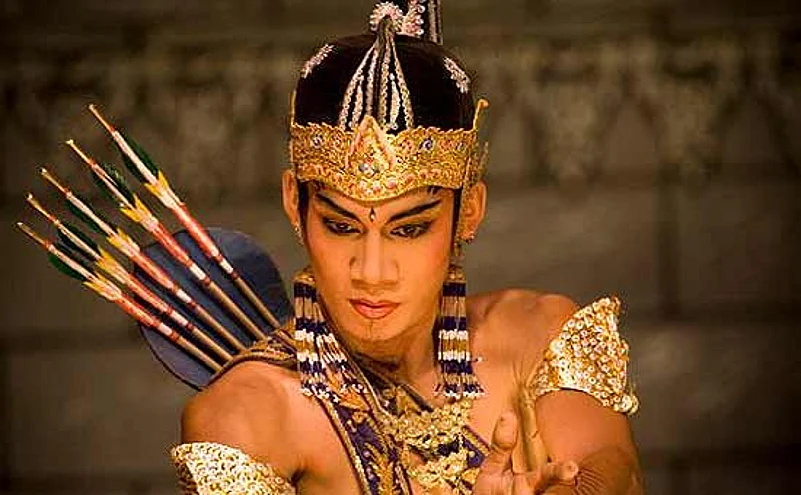What new insights into Rama’s actions and thoughts do we gain if we forget, as he himself forgot most of the time, that he is a god? This is the fruitful premise of Arshia Sattar’s profound and wise new book. She brings out important aspects of the Valmiki Ramayana that others have managed to overlook, partly because they have been blinkered by the heavily censored reading of the Ramayana that contemporary political factions broadcast everywhere. Sattar is steeped in the Ramayana (hers is by far the best single-volume English translation) and has the gift of noticing things that the rest of us tend to miss.
The great value that Hindus place on the most ancient, “original” texts has given Valmiki’s Sanskrit Ramayana a special status. When citing a particular detail of the story, people will say, “It’s in Valmiki”. Yet, since not everyone in India reads Sanskrit, other versions of the Ramayana are the ones that most people in India actually know—Tulsidas’s 16th century Awadhi version, or the televised Ramayana series, or the Amar Chitra Katha comics. Religious groups who make the Valmiki Ramayana the canonical source of their own beliefs often wrongly attribute to Valmiki’s text episodes that are not in it. Such as the moment when a low-caste tribal woman, a Shabari, tastes bits of fruit before she offers them to Rama. This episode is cited neither by Valmiki nor by Tulsi; it’s a woman’s touch that the 16th century poet Mirabai added. But the story contributes to an image of the “original” Rama as someone magnanimous to people of low caste and willing to ignore basic Hindu laws about purity.
More significant is the flip side of this process, when political factions ignore, or even deny, the existence of episodes that are in Valmiki’s Ramayana. Like the scene in which Sita leaves Rama forever and returns to her mother, the Earth. This scene occurs in the last book, the Uttara Kanda, which was, along with the first book, the Bala Kanda, composed later than the other five books, and which Tulsi omits entirely.
The Sita who emerges from Sattar’s careful reading of such scenes is far more assertive and passionate than the stereotype of the perfect wife who emerges from other Ramayanas that play down or omit those qualities. That submissive Sita is real, too; she has shaped the lives of Hindu women for many centuries. She does not have to be in Valmiki to be real. But Sattar shows us how the complexity of her character in Valmiki affects Rama’s morally questionable actions. Acts like the killing of the monkey king Valin and banishing Sita, that have troubled Hindus throughout the long Ramayana tradition.
Regarding Rama as a man/god who thinks he is just a man, that thought leads Sattar to many insights. The idea that Rama flees to asceticism from the sexual politics of Ayodhya, for example—a choice that mirrors on the individual level what was happening all over India at the time of the Ramayana’s composition. Buddhists, Jains and Hindus were withdrawing from sensual urban life to find peace in the forest.
Nineteenth century European scholars sometimes followed the rationalist school of interpretation called Euhemerism, named after Euhemerus, an ancient Sicilian who demythologised the Greek gods. He argued that they were originally nothing but men with special abilities and that later writers mistook those abilities for divine powers. Such scholars insisted that Rama was originally (that is, in lost versions of the Ramayana before Valmiki) a man, and that Brahmin editors later made him a god, pasting divinity onto him like icing on a cake.
Sattar avoids this simplistic approach entirely. She makes it clear that Valmiki’s Rama is always a god incarnate. But she points out that in the books composed earliest (two through six), Rama does not know he is a god and therefore suffers the all too human anguish of separation from Sita. Only in parts of the later, framing books (one and seven), does he sometimes know that he is a god. This knowledge, in the pious Ramayanas that follow Valmiki, makes it impossible for Rama to make some of the mistakes that he makes in the Valmiki text and justifies others in the light of divine omniscience. By turning us back to the deepest human meanings of the Valmiki text, Sattar makes us realise how deeply conflicted Rama is, and therefore what a valuable guide he provides for contemporary mortals like us, a far better model than a hero who knows he is a god and therefore can do no wrong.


























